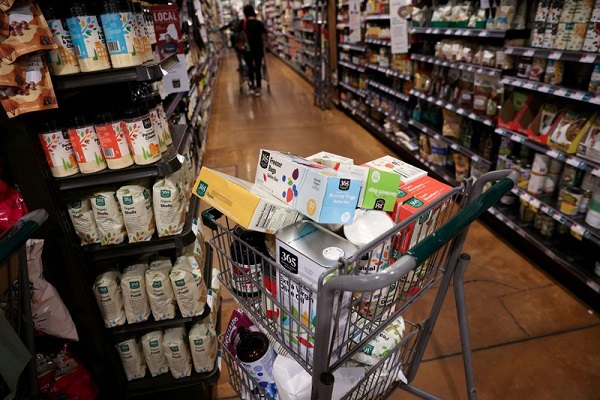U.S. CPI falls to 9-month low in October, bolstering rate hopes
2022.11.10 11:17
[ad_1]

© Reuters
By Geoffrey Smith
Investing.com — The annual rate of inflation in the U.S. fell by more than expected in October, indicating that the worst of the post-pandemic price spike is over and bolstering hopes of an early end to the current cycle of interest rate increases.
rose 7.7% from a year earlier, down from 8.2% in September and clearly below the 8.0% consensus forecast. The current dynamic in prices also eased more than expected. with rising only 0.4% on the month, down from 0.6% in September, and – which strip out volatile food and energy elements – rising 0.3%, rather than the 0.5% expected.
The headline rate of inflation has now fallen for four months in a row, from a peak of 9.1% in June. At 7.7%, it’s now at its lowest rate since January.
Financial markets reacted strongly to the news. The market had been forced by Federal Reserve Chair Jerome Powell after the central bank’s last policy meeting to expect that it would keep rates higher than thought for longer than thought. The CPI numbers triggered a rapid reappraisal of that scenario.
The fell 1.5% to trade at 108.78, its lowest in nearly two months. meanwhile leaped by 3.2%, and by 4.2% in revived anticipation of a major turning point in the cycle.
“After the November FOMC meeting, the market was priced for a terminal rate of ~5.2% in June 2023 (higher for longer),” said Eric Basmajian, CEO of EPB Research, via Twitter. “After today’s CPI miss, the market moved to 4.93% in March 2023 (lower for shorter).”
“Inflation turned down because core goods inflation finally turned strongly negative,” said Peterson Institute fellow Jason Furman.
Inflation in core services also turned down, having trended up markedly in recent months. That was due in part to the lagged effect of price adjustments for health insurance, Furman said, although he also noted that the steam also appeared to be going out of new rent agreements in the housing market. As such, he argued that shelter costs – which accounted for half of the rise in the all-item index, were overstating the current reality of inflation by around 0.2 percentage points.
[ad_2]
Source link








